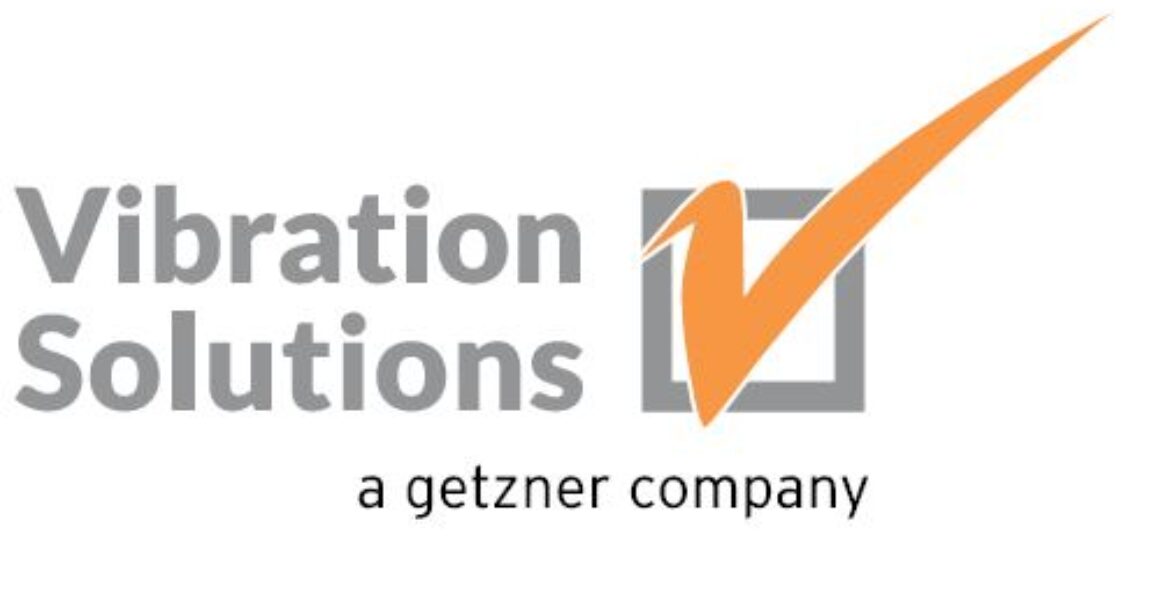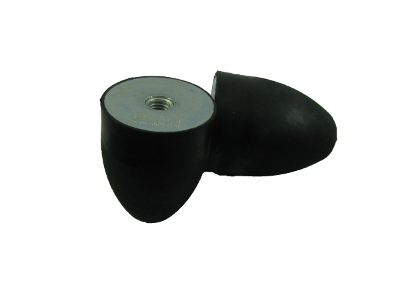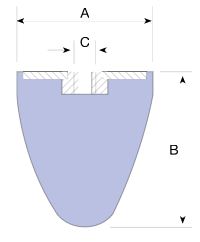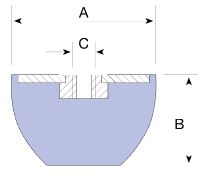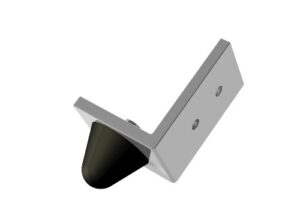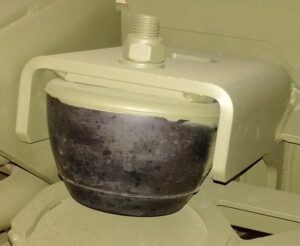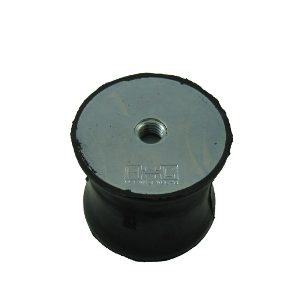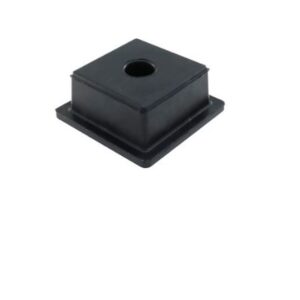Description
Buffer progressive Type C
Female mounting thread.
|
Type |
A(mm) |
B(mm) |
C(mm) |
Load (kg) |
Weight(kg) |
Energy(Nm ) |
Dynamic Deflection mm |
Code |
|
T-25 |
25 |
19 |
M-8 |
100 |
0,018 |
3 |
8 |
115008 |
|
T-30 |
30 |
30 |
M-6 |
140 |
0,025 |
6 |
15 |
115009 |
|
T-50 |
50 |
50 |
M-8 |
340 |
0,106 |
30 |
25 |
115010 |
|
T-50 |
50 |
64 |
M-8 |
370 |
0,132 |
40 |
32 |
115011 |
|
T-50 |
50 |
58 |
M-8 |
400 |
0,114 |
37 |
28 |
115012 |
|
T-70 |
72 |
58 |
M-12 |
550 |
0,213 |
50 |
26 |
115014 |
|
T-95 |
95 |
80 |
M-16 |
1100 |
0,516 |
120 |
37 |
115015 |
|
Type |
A(mm) |
B(mm) |
C(mm) |
Load (kg) |
Weight(kg) |
Energy(Nm ) |
Dynamic Deflection mm |
Code |
|
T – 85 |
84 |
52 |
M-12 |
1500 |
0,315 |
200 |
20 |
116011 |
|
T -120 |
120 |
75 |
M-16 |
3000 |
0,933 |
340 |
22 |
116012 |
|
T – 220 |
220 |
137 |
M-24 |
15000 |
5,66 |
2500 |
40 |
116013 |
